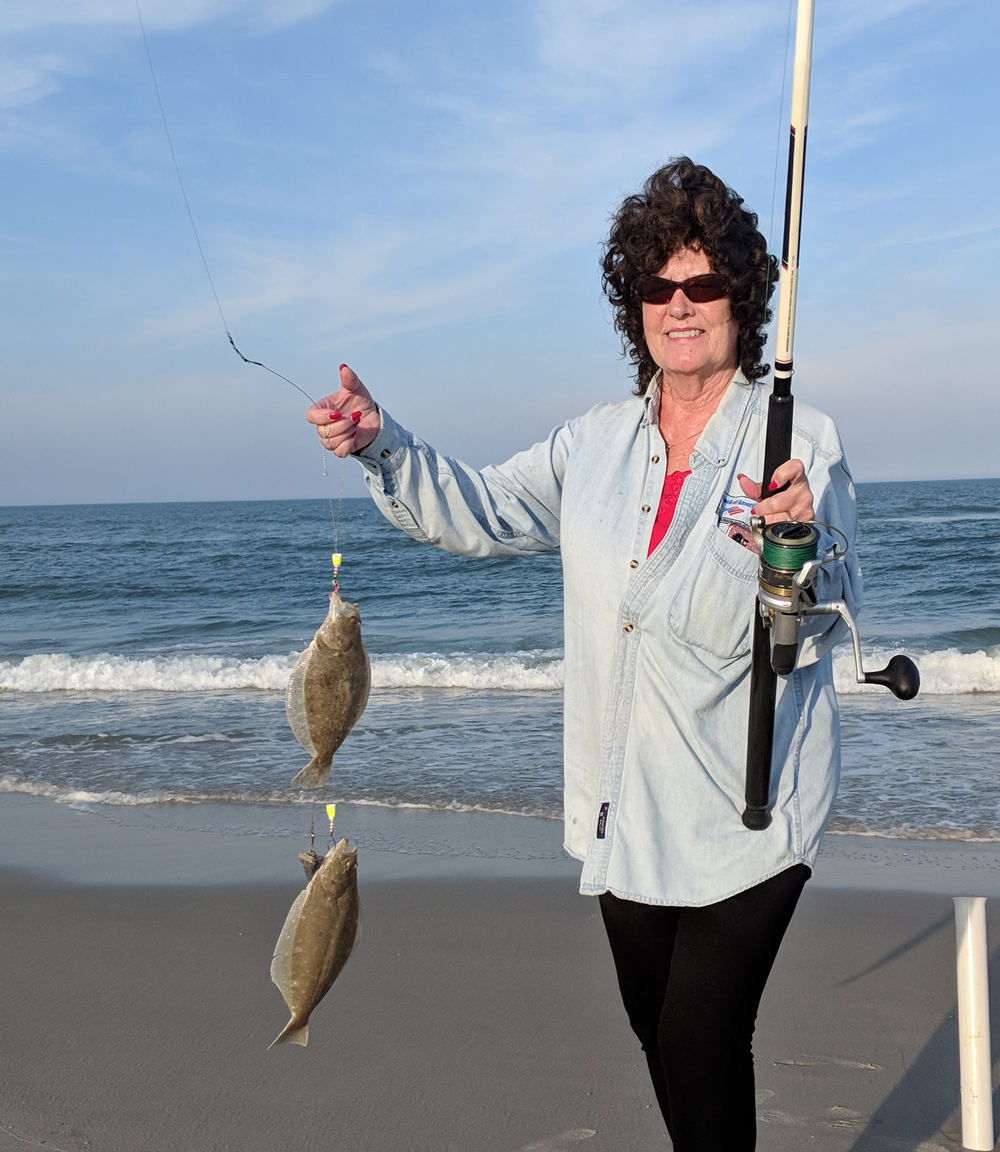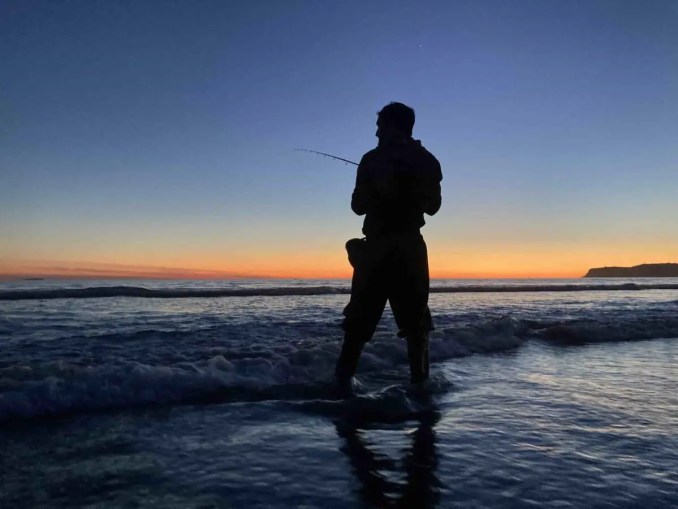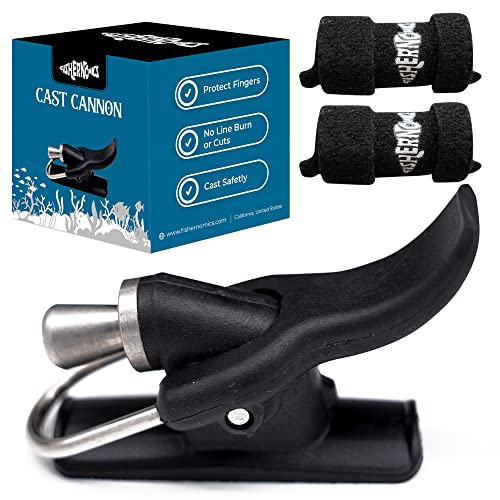For surf fishing, the best option to use is a long casting rod paired with a sturdy reel. To ensure success, anglers should also use a variety of lures, such as spoons, jigs, and swimbaits.
These tackle options allow for long-distance casting, which is essential when fishing in the surf. Additionally, using a sand spike or rod holder can help keep your rods secure while awaiting a bite. It is important to note that the type of bait used may vary depending on the target species and the specific location.
Always check local regulations and conditions before heading out. Surf fishing is an exhilarating activity that allows anglers to try their luck in the challenging and dynamic environment of ocean waves. To succeed in this pursuit, it is crucial to have the right gear and tools at hand. Choosing the appropriate equipment can significantly impact your chances of reeling in a catch. We will explore the essential items and techniques that are essential for a successful surf fishing experience. From long casting rods and sturdy reels to a selection of lures and appropriate bait choices, we will cover everything you need to know to maximize your chances of landing a prized fish. So, without further delay, let’s dive into the exciting world of surf fishing gear!

Credit: fishtalkmag.com
Choosing The Right Surf Fishing Rods And Reels
Surf fishing is an exhilarating experience that requires the right equipment to make the most of your time on the beach. Having the perfect surf fishing rod and reel combination can greatly increase your chances of success and help you reel in that big catch.
Here are some essential factors to consider when choosing surf fishing rods:
- Length: The length of your surf fishing rod plays a vital role in determining your casting distance. Longer rods, typically ranging from 9 to 15 feet, allow for longer casts and better control over your line, making them ideal for surf fishing. Shorter rods may limit your casting range and control.
- Power and action: Surf fishing rods come in various power and action ratings. Power refers to the rod’s ability to withstand pressure, while action determines how much the rod bends when pressure is applied. A medium to heavy power rod with moderate to fast action is recommended for surf fishing, as it provides the right blend of sensitivity and strength.
- Material: Surf fishing rods are commonly made of graphite, fiberglass, or a combination of both materials. Graphite rods are lighter, more sensitive, and tend to have a faster action, making them ideal for casting distance. Fiberglass rods offer greater durability and strength, perfect for handling bigger fish and rough surf conditions. Rods with a combination of graphite and fiberglass provide a good balance of both qualities.
Types of reels recommended for surf fishing:
- Spinning reels: Spinning reels are the most popular choice among surf anglers due to their versatility, ease of use, and ability to handle a wide range of fish sizes. They offer a smooth drag system, large line capacities, and excellent casting capabilities. Look for spinning reels with a sealed drag to protect against saltwater corrosion.
- Conventional reels: Conventional reels, also known as baitcasting reels, provide a higher level of control and power, making them suitable for targeting larger species of fish. They are designed to handle heavy lines and offer superior drag systems. However, baitcasting requires more skill and practice, making them better suited for experienced anglers.
Best surf fishing rod and reel combos:
- Penn battle ii spinning combo: This combo combines the durability of the penn battle ii spinning reel with a range of rod lengths and power options, allowing you to choose the ideal setup for your surf fishing needs. It offers a smooth drag, excellent casting performance, and corrosion-resistant construction.
- Daiwa sealine surf combo: The daiwa sealine surf combo pairs a high-capacity spinning reel with a durable and flexible graphite composite rod. It offers a strong drag system, excellent line retrieval, and is ideal for tackling large fish in surf conditions.
- Okuma cedros cj spinning combo: The okuma cedros cj spinning combo is designed specifically for surf fishing. It features a corrosion-resistant reel and a lightweight graphite rod with an extra-long handle for increased casting distance. The combo offers exceptional power, sensitivity, and durability.
Remember, choosing the right surf fishing rods and reels is crucial for a successful and enjoyable fishing experience. Consider the factors mentioned above and explore reputable brands and models that suit your needs and budget. So, gear up with the right equipment, head out to the beach, and prepare to make some unforgettable catches!
Essential Tackle And Gear For Surf Fishing
Surf fishing is an exhilarating sport that allows you to connect with nature and cast your line in the vast ocean. To maximize your success, it’s essential to have the right tackle, gear, and accessories. In this section, we will explore the must-have items for surf fishing, the various bait and lure options available, and some accessories to enhance your overall experience.
Must-Have Terminal Tackle For Surf Fishing
When it comes to surf fishing, having the right terminal tackle can make all the difference. Here are some key items you should include in your tackle box:
- Fishing rod: Opt for a long, sturdy rod specifically designed for surf fishing. Look for a length between 10 to 12 feet, which allows for longer casts and better control.
- Fishing reel: A spinning reel is the preferred choice for surf fishing due to its versatility. Make sure to choose a reel with a high line capacity to handle larger fish that you may encounter in the surf.
- Fishing line: Use a braided fishing line for surf fishing, as it offers higher strength and sensitivity compared to monofilament lines. Opt for a line with a test rating suitable for the species you are targeting.
- Hooks: Carry a selection of hooks in various sizes to accommodate different bait options and target fish species. Circle hooks are recommended for catch-and-release fishing, as they tend to hook the fish in the corner of the mouth, minimizing injury.
- Sinkers: Utilize pyramid sinkers or bank sinkers to help your bait reach the desired depth in the surf. The weight of the sinker will depend on the current and wave conditions on the day of fishing.
Bait And Lure Options For Maximizing Success
Choosing the right bait or lure is crucial for enticing fish to bite. Here are some proven options to consider:
- Fresh bait: Using fresh bait such as live shrimp, sand fleas, or mullet can attract a variety of fish species. Make sure to check local regulations and restrictions before using live bait.
- Artificial lures: Artificial lures like spoons, jigs, and soft plastics can mimic the movement of prey and attract predatory fish. Experiment with different colors and sizes to see what works best in your fishing spot.
- Cut bait: Cut bait, such as chunks of fish or squid, can be an effective option for surf fishing. Use a fish finder rig or a carolina rig to present the bait naturally in the water.
Surf Fishing Accessories To Enhance Your Experience
To make the most out of your surf fishing adventure, consider these accessories:
- Sand spikes: Invest in a sand spike to hold your fishing rod securely in the sand while you wait for a bite. This allows you to keep your hands free and prevents your rod from getting buried in the sand.
- Fishing cart: A fishing cart is a convenient way to transport all your gear, including rods, tackle, and coolers, across the sandy beach. Look for one with sturdy wheels that can handle the uneven terrain.
- Polarized sunglasses: Polarized sunglasses are not only fashionable but also essential for surf fishing. They help reduce glare from the water surface, enabling you to see fish and underwater structures more clearly.
- Sun protection: Don’t forget to protect yourself from the sun’s harmful rays. Wear sunscreen, a hat, and lightweight clothing to shield your skin from the intense sun and stay comfortable throughout the day.
By equipping yourself with the right terminal tackle, bait and lure options, and accessories, you can enhance your surf fishing experience and increase your chances of landing that trophy fish. Whether you’re a beginner or a seasoned angler, having the right gear will undoubtedly contribute to a successful day on the shore.
So pack up your gear, grab your fishing rod, and get ready for an unforgettable surf fishing adventure!
Expert Tips For Successful Surf Fishing
Surf fishing can be an exciting and rewarding experience for anglers of all levels. Whether you’re a beginner or an experienced angler, understanding the key factors that contribute to a successful surf fishing trip can make a big difference in your catch.
In this section, we will explore some expert tips that will help you maximize your chances of success when surf fishing.
Understanding Tides And Wind Patterns
- Tides and wind patterns play a crucial role in determining the best times and locations for surf fishing. Here’s what you need to know:
- Tides: Pay attention to the tide charts and plan your surf fishing trips around the incoming and outgoing tides. Fish are more active during tide changes, so aim to fish during high tide or when the tide is moving.
- Wind patterns: Wind direction and speed can impact the surf’s conditions and the fish’s behavior. Generally, an offshore breeze (wind blowing from the land towards the sea) creates favorable conditions for surf fishing. It helps push baitfish closer to the shoreline, attracting larger predator fish.
Locating The Best Surf Fishing Spots
- Finding the right spot along the shoreline is essential to increase your chances of catching fish. Consider the following tips:
- Observe the waves: Look for areas where the waves break consistently. These breaking waves create turbulence and stir up the ocean floor, attracting baitfish and other marine species.
- Study the beach structure: Pay attention to areas where the beach structure changes, such as sandbars, troughs, or rocky patches. These structures create favorable habitats for fish to hide and hunt.
- Ask the locals: Local anglers are often the best source of knowledge when it comes to surf fishing. Strike up a conversation and ask for advice on the most productive spots in the area.
Techniques For Casting And Retrieving In The Surf
- Mastering your casting and retrieving techniques can significantly improve your success rate when surf fishing. Consider these techniques:
- Long casting: Learn to cast your bait or lure as far as possible beyond the breaking waves. This allows you to reach deeper water where the fish often hide.
- Using surf rigs: Utilize surf rigs such as fishfinder rigs or pompano rigs, which are designed to keep your bait just off the bottom where fish are most likely to feed.
- Slow and steady retrieval: When retrieving your bait or lure, maintain a slow and steady pace to mimic natural prey. This entices fish to strike and increases your chances of a hookup.
Remember, practice makes perfect when it comes to surf fishing. Experiment with different techniques, observe the behavior of both the waves and the fish, and adapt to the conditions you encounter. By following these expert tips, you’ll be well on your way to a successful surf fishing adventure.
Happy fishing!
Conclusion
To optimize your surf fishing experience, it’s crucial to select the right equipment. The type of gear you choose can greatly impact your chances of a successful catch. Start with a sturdy fishing rod that can withstand the surf’s powerful waves.
Look for a reel that can handle saltwater conditions and has a high gear ratio for quick retrieval. For bait, consider using live or cut bait depending on the species you are targeting. Additionally, having a variety of lures in your tackle box will give you options when fish are not biting on natural bait.
Remember to check local regulations to ensure you are using legal bait and tackle. By using the right equipment, you increase your chances of a rewarding and successful surf fishing experience. So gear up and head out to the waves – happy fishing!






